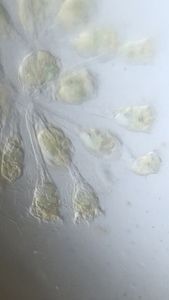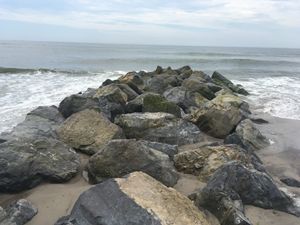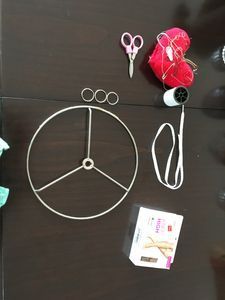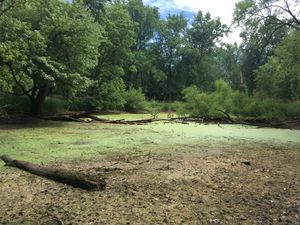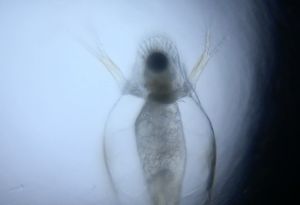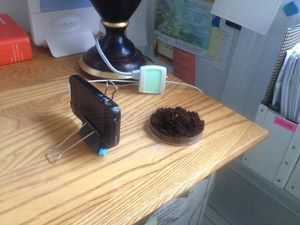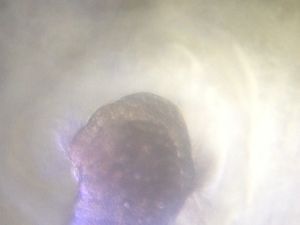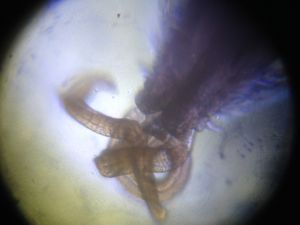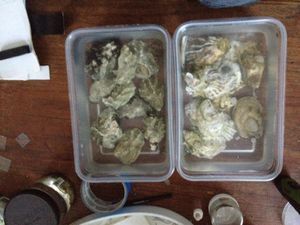Identifying as a Detective
 Sep 23, 2016 • 6:51 PM UTC
Sep 23, 2016 • 6:51 PM UTC Unknown Location
Unknown Location 140x Magnification
140x Magnification Microorganisms
Microorganisms
Matthew Rossi
I'm a novelist, essayist, and a writing consultant. I work in the writing centers at Columbia and Baruch University and explore research into the overlap of maker cultures and writing. My work with the Foldscope tends to focus on finding wild creatures in urban spaces and looking at how human works are shaped by the movements of the biosphere.
40posts
105comments
4locations
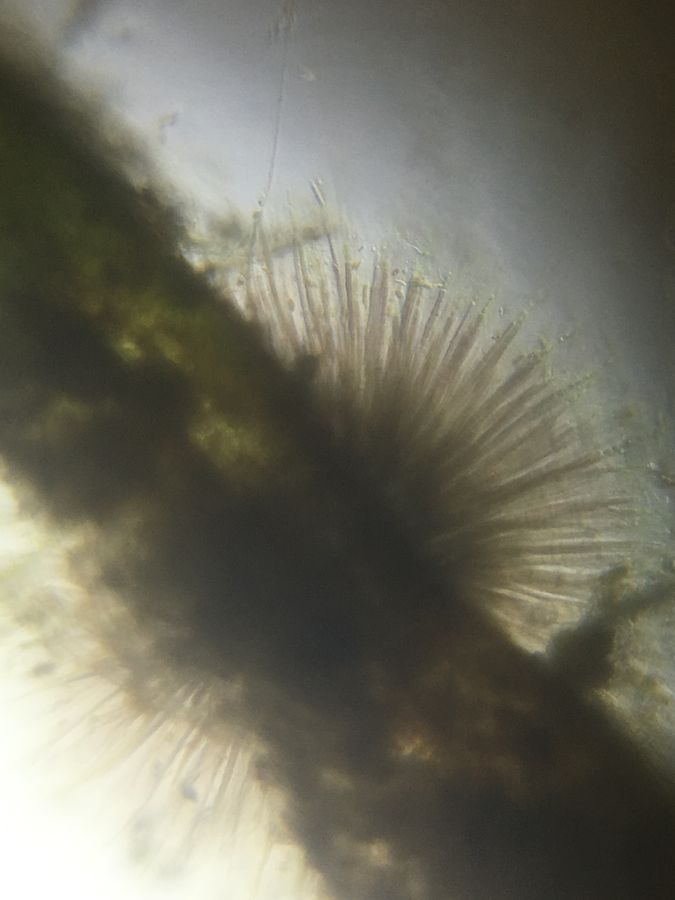
I’m on a rotifer kick at the moment. Just this week, I nabbed a video of this little one clinging to a diatom rich piece of hornwort (the underwater plant to beat in my current hunting grounds):
A challenge that keeps coming with each new find is how to identify the creatures I’m seeing. With some creatures, it’s not so tough. This rotifer identifies pretty well with a simple key. This one has served me well for a while. However, on ocassion, there isn’t a key readily available, and this requires some thick description of the thing.
This occasionally involves a simple Google search, as, for example, with this water mite.
This occasionally involves a simple Google search, as, for example, with this water mite.


It’s a fairly easy process to find something like this simply by doing an image search for arachnids under water. Under the microscope, the fact that it’s a mite and not a spider is easier to see, too. Its single body segment and the quintessentially mite-like pedipalps make that clear. Though other questions arise, for example, when I find this thing, which is plainly another mite, but what species?
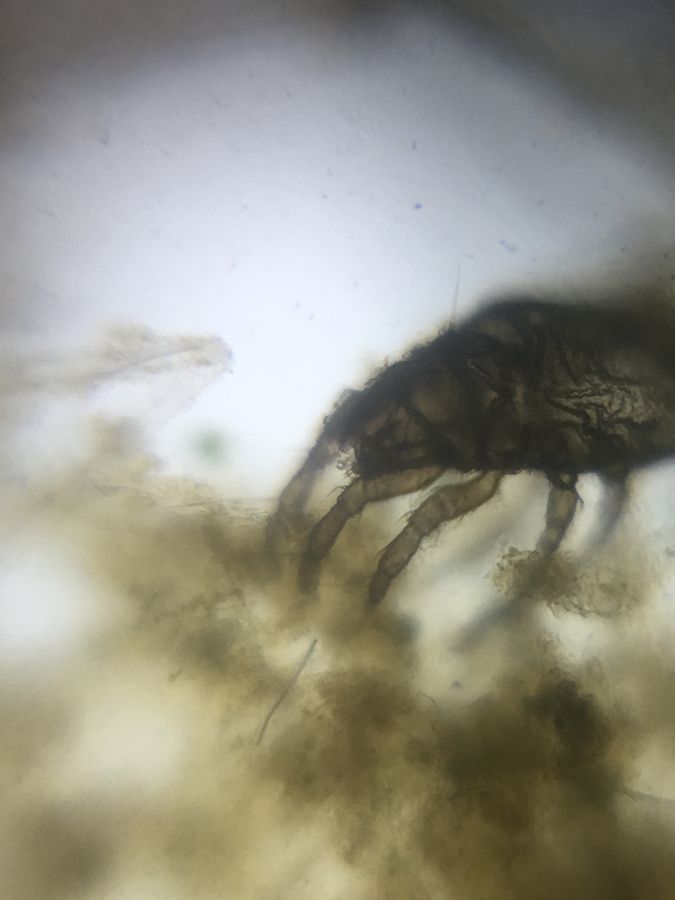
I have no idea what you are, other than a mite. So if I were to look, I would have to go deep in the description. Water mites, black, feeding on algae. And then a description of a few behaviors or body parts. And this would give me, I think, a sense of what it was.
Sometimes, this leads to several days of detective work. Which is what happened with this thing I found the other day:
Sometimes, this leads to several days of detective work. Which is what happened with this thing I found the other day:
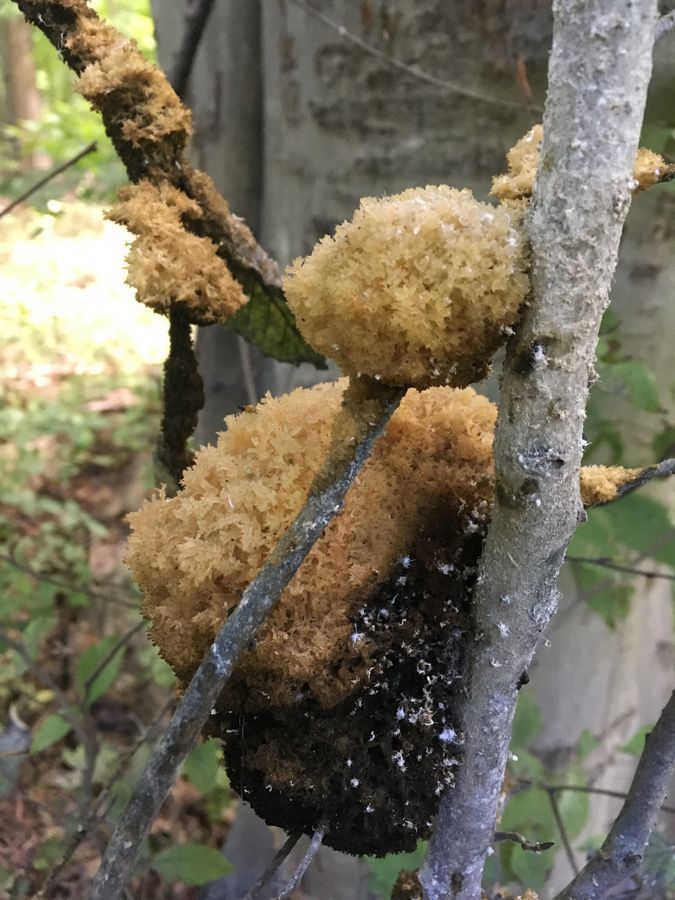
A squishy, spongy mass of growths on a tree. How do I figure out what it is? A foldscoping of it helps me see it’s not a plant, but I already sort of knew that.

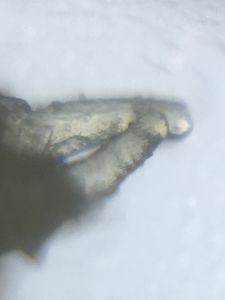

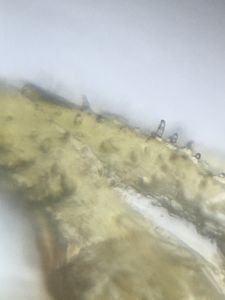
Though the closeups give a magnificent view of it, it doesn’t tell me what it is. So a little detective work is necessary. I observe, for example, that the tree it’s on has an infestation of aphids, and it looks to my eye like a fungus. A googling for this gives me a likely suspect, sooty mold, which infests trees infested with aphids to feed on the sugar they secrete. But all evidence said it should be a simpler organism that looks like a dusting of ash on the tree.
So I consider other options. A lichen of some sort–that would explain the plant-like growths growing over a base that looks like dirt. But it’s too big, too full for that. Perhaps a slime mold? I dive into a search for them (making me hope to find one to see its amazing cell structures under the microscope), but it’s too complex and too solid.
So I return to the first, most likely suspect, the mold. This time, I go back to the tree and employ the rest of my senses for a fuller description. It smells, for instance, sweet like a newly fermenting wine. Its texture is less mossy than spongy, and it glistens with moisture. The tree is, without question, a beech tree, making the original diagnosis more likely. And I see around the base many of the characteristic marks of a sooty mold–the dusting of black “soot” among them. And then this more descriptive search finds me my answer: a spongy sooty mold. A specific species under a larger umbrella of creatures.
What I love about this is how much it requires me to think about my specimens after I’ve looked a them. To think about them in terms of where they are, what they’re doing, the larger context of the environment they’re in. In my class, I teach my students about thick description–a way of discovering meaning in things that comes out of the context in which they exist, rather than the simple truth of its use.
Thinking about the creatures we look at from this perspective helps me understand them as they live in their environment. It helps me to see their identification as something that comes out of my own investigation of their lives, rather than as a preordained name they’ve been given by someone else. Keys are helpful, of course, but having to go back and forth a bit makes it all the more exciting when I finally understand what I’m seeing.
And so I leave you with this question: what is this? What questions would you have me ask to find out what it is?
So I consider other options. A lichen of some sort–that would explain the plant-like growths growing over a base that looks like dirt. But it’s too big, too full for that. Perhaps a slime mold? I dive into a search for them (making me hope to find one to see its amazing cell structures under the microscope), but it’s too complex and too solid.
So I return to the first, most likely suspect, the mold. This time, I go back to the tree and employ the rest of my senses for a fuller description. It smells, for instance, sweet like a newly fermenting wine. Its texture is less mossy than spongy, and it glistens with moisture. The tree is, without question, a beech tree, making the original diagnosis more likely. And I see around the base many of the characteristic marks of a sooty mold–the dusting of black “soot” among them. And then this more descriptive search finds me my answer: a spongy sooty mold. A specific species under a larger umbrella of creatures.
What I love about this is how much it requires me to think about my specimens after I’ve looked a them. To think about them in terms of where they are, what they’re doing, the larger context of the environment they’re in. In my class, I teach my students about thick description–a way of discovering meaning in things that comes out of the context in which they exist, rather than the simple truth of its use.
Thinking about the creatures we look at from this perspective helps me understand them as they live in their environment. It helps me to see their identification as something that comes out of my own investigation of their lives, rather than as a preordained name they’ve been given by someone else. Keys are helpful, of course, but having to go back and forth a bit makes it all the more exciting when I finally understand what I’m seeing.
And so I leave you with this question: what is this? What questions would you have me ask to find out what it is?

Sign in to commentNobody has commented yet... Share your thoughts with the author and start the discussion!
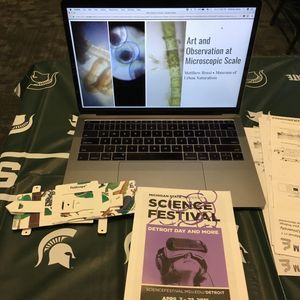
 0 Applause
0 Applause 0 Comments
0 Comments




